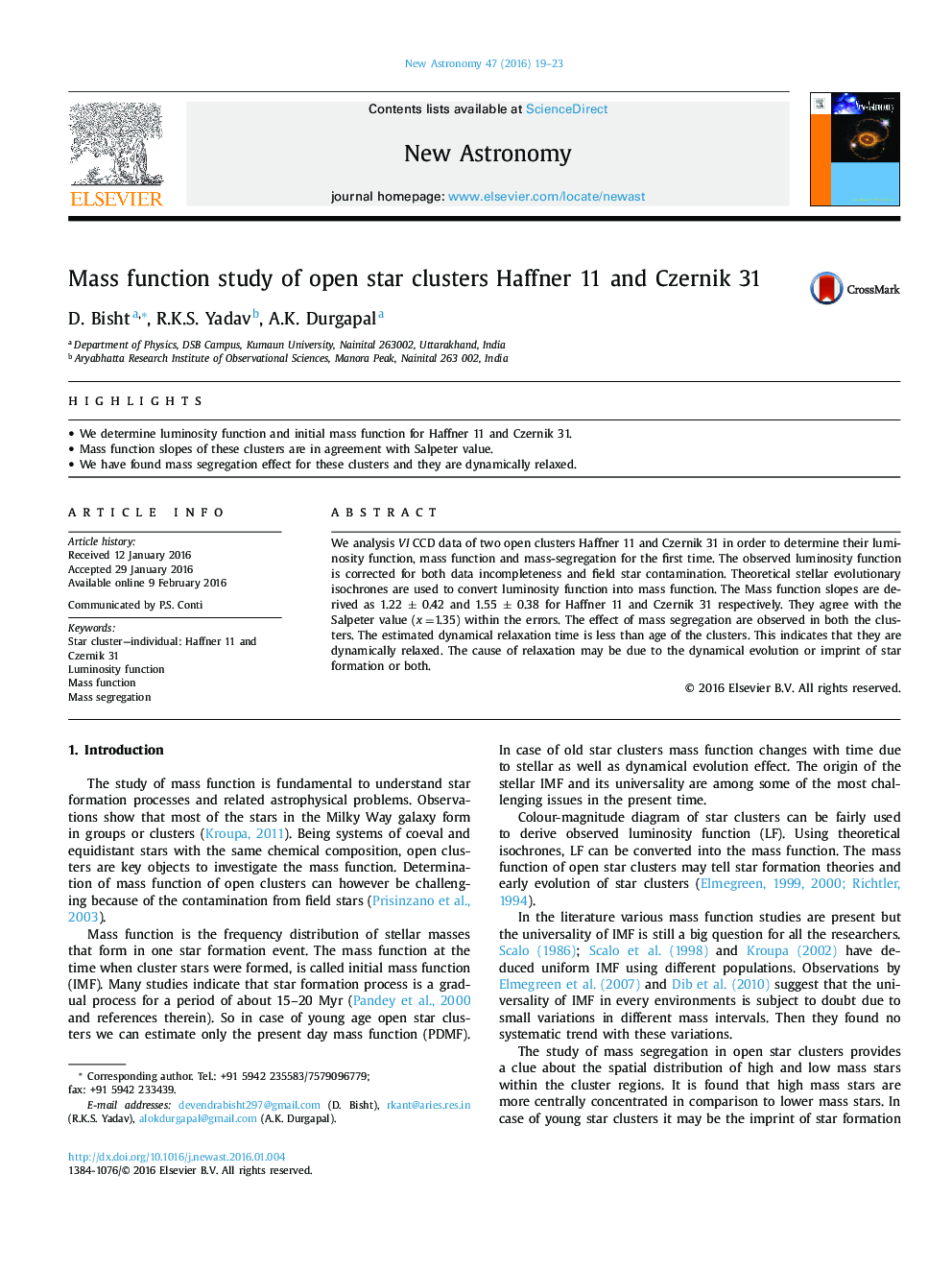| Article ID | Journal | Published Year | Pages | File Type |
|---|---|---|---|---|
| 1778763 | New Astronomy | 2016 | 5 Pages |
•We determine luminosity function and initial mass function for Haffner 11 and Czernik 31.•Mass function slopes of these clusters are in agreement with Salpeter value.•We have found mass segregation effect for these clusters and they are dynamically relaxed.
We analysis VI CCD data of two open clusters Haffner 11 and Czernik 31 in order to determine their luminosity function, mass function and mass-segregation for the first time. The observed luminosity function is corrected for both data incompleteness and field star contamination. Theoretical stellar evolutionary isochrones are used to convert luminosity function into mass function. The Mass function slopes are derived as 1.22 ± 0.42 and 1.55 ± 0.38 for Haffner 11 and Czernik 31 respectively. They agree with the Salpeter value (x=x=1.35) within the errors. The effect of mass segregation are observed in both the clusters. The estimated dynamical relaxation time is less than age of the clusters. This indicates that they are dynamically relaxed. The cause of relaxation may be due to the dynamical evolution or imprint of star formation or both.
